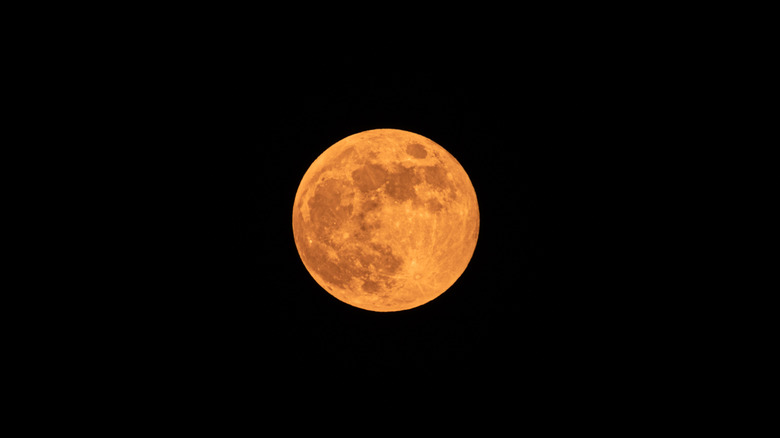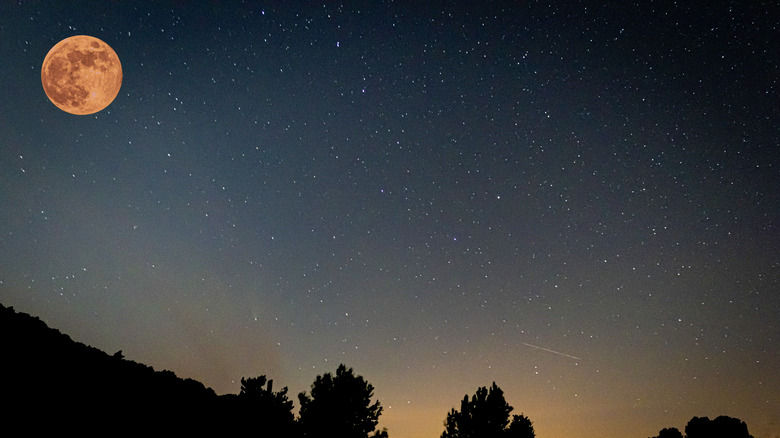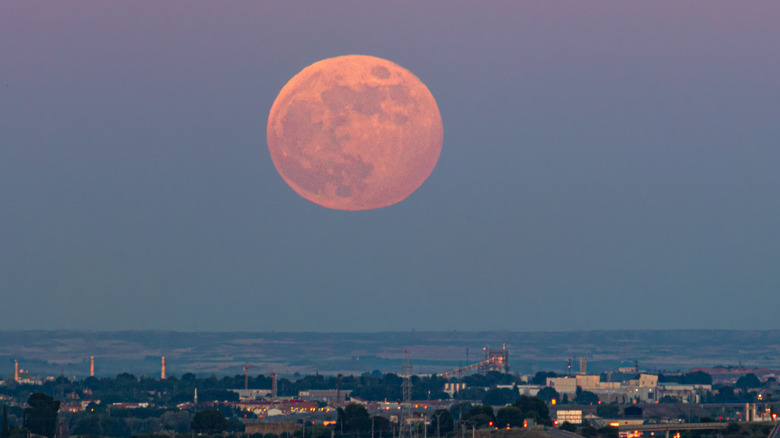What Is A Strawberry Supermoon?
A full moon is often an incredible sight to see, but when a full moon is as close to the Earth as it can get, it gets even better — and is known as a supermoon. At this point, the Earth's most nearby interstellar companion appears larger and therefore easier to see with the naked eye than at any other time in the lunar cycle, according to NASA. Each time this happens, the moon really puts on quite a show.
Each June, when the full moon happens, it's called a strawberry moon, and when the heavens line up just right, and a supermoon happens at the same time as the strawberry moon, it's called — no shocker here — a strawberry supermoon. This isn't because of the pinkish hue a supermoon sometimes takes on due to certain atmospheric conditions (among other factors), as Axios notes. Instead, the real reason the full June moon is called "strawberry" goes back well into North American history.
June's full moon is the last one for the spring
Another important thing to note is that June's full moon is the last full moon of the spring and that supermoons tend to happen in quick succession from May through August, according to SPACE.com. Some estimate that the moon will appear as much as 30% brighter and 17% larger than normal whenever they occur.
Also, supermoons often look pinkish or red at this point both due to atmospheric conditions and the fact that the Earth itself is blocking the sunlight that typically lights up a full moon (this usually makes the moon appear white or gray-tinted, as SPACE.com also notes). For this reason, supermoons are also sometimes called "blood moons." In Europe, they're called mead, honey, or a rose moon, according to Axios. As far as the North American strawberry supermoon, though, that red or pinkish hue is just a sweet, tasty coincidence.
The strawberry supermoon marks the peak of strawberry season
If you're lucky enough to have a good view of a strawberry supermoon with no cloud cover, experts say it's worth a look with nothing but your naked eye. If you have binoculars or a telescope, though, the valleys, craters, and other topographical formations will be particularly visible, according to SPACE.com. And the real reason that strawberry moons are called what they're called has to do with a popular fruit that begins to ripen around the same time that it happens: actual strawberries.
The term strawberry moon is said to date back to the Native American Algonquin tribes that populate the northeastern U.S. and Canada, as NPR notes. When the strawberry moon was seen on the horizon, it was a signal to the Algonquin people that strawberries were ripe and ready to harvest, similar to a super buck moon, which is also expected to happen in July of 2022, keeping time with antlers as they emerge on the heads of young bucks, according to Axios.


